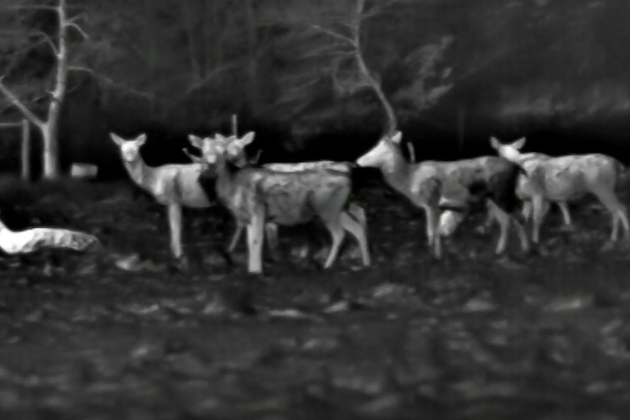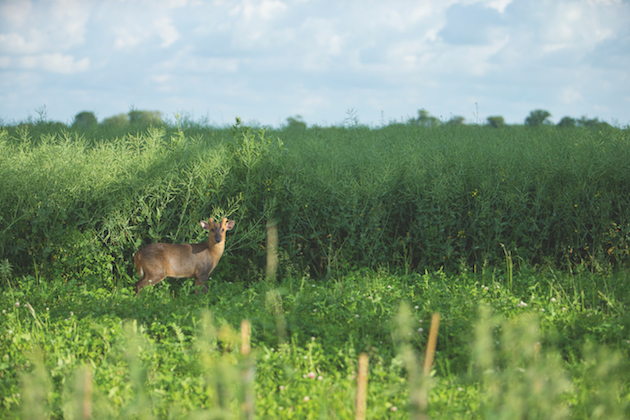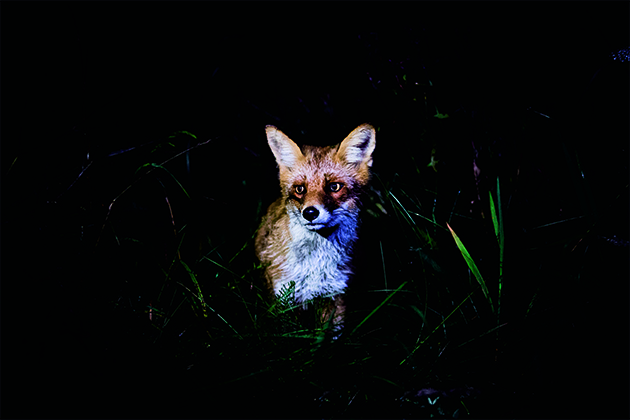Comfortable to hold and handy in the field – the new Zeiss thermal imaging monocular
Look up the dictionary definition of the word ‘ergonomic’ and you’ll see that it means ‘designed for efficiency and comfort…
Win CENS ProFlex DX5 earplugs worth £1,149 – enter here
 thermal imager
Usd 16 oct 19 stalking
thermal imager
Usd 16 oct 19 stalking
Thermal imaging is a total game changer in terms of detecting and in some instances shooting quarry species. But in terms of best practice, a few guidelines need considering for using thermal imagers ethically. It’s critical to differentiate between a spotter and riflescope because like binoculars versus rifle/scope, you can pretty much carry and use a spotter without causing harm but the a riflescope differs massively. I feel thermal falls into a similar camp.
We have always searched out the finest daylight riflescopes to make the best shots possible and it is a fact that thermal allows you to see after dark, in situations that once were impossible. It must be accepted the diminished image quality and shot placement precision will suffer to some extent, especially as ranges increase.
These roe deer in the footage shown are partially concealed and although offer a shot, would you take it with regard to background and intervening foliage?
The lingering gaseous muzzle flash can obscure sight picture to spot exact shot impact and quarry reaction so bear these important factors in mind when considering taking longer shots, with weaker ability to follow up on misses or wounded game. Also consider that you will not see external wind conditions throughout the bullets flight line on foliage blowing in the darkness.
Rangefinding, although a growing digital capability with NV and thermal kit, is not to the standard of daylight optics and as distance increases, precise range appreciation requires more accuracy. In some situations, recording and reviewing footage with hot blood and tissue exiting a wound can give better clues as to what has happened if game isn’t dropped on the spot. It can help you decide the best follow up tactic. A fast follow up on wounded game will push it harder to escape and if you have thermal capability, it often allows you to ease back with confidence that you can still follow up and find quarry that will lie up and expire without further stress. Before thermal, the split second of possible daylight sight picture on impact or strike sound might have been all you had. So thermal brings a huge advantage.
Part of using thermal imagers ethically is being fully familiar with thermal signature variation from animal physicality throughout the changing climatic and legal seasons. Full detail recognition can make the difference from legal to illegal if you fail to properly identify species and sex in accordance with the law. Also, what can and cannot be engaged both north and south of the Scottish border with electronic and image intensifying equipment. This should fall in line with night shooting permits for deer but unexpected use of electronic kit could still fall foul of the law in daylight so research is crucial. There is a huge legal difference between spotting/tracking using thermal, and shooting using thermal.
There is no doubt that faster, flatter shooting projectiles lessen short to mid-range distance judging requirements but beware wind resistance factors. Thermal is unlikely to reveal anything like as much detail of air movement along your bullet’s line of fire. A 58gr .243 Varmint bullet is incredibly fast but offers less wind resistance capability in a point-blank zero shooting scenario. A 75gr .243 bullet will take a point blank zero for foxes similarly to the 58 grainer but offer 20% less wind drift at 300 metres. Similar factors apply to using heavier, higher ballistic coefficient bullets in stalking calibres so in a world where range has become easily digitally conquered, the wind still hasn’t been so easily accounted for, even when you can see its effects in daylight.

Be sure of species and legality
Are thermal imagers sporting? This question is a minefield. If used as a tool to do a serious job, controlling predators, or harvesting meat for the freezer, the thermal imager has few equals; it makes the job faster, safer and easier but is it sporting? Perhaps not, yet there is pleasure to the success or lessons learned from failure of any “sporting” hunt in its own right, long before any decisive shot is taken.
Where pest control is a deciding financial consideration on a game shoot or farm with livestock, there is no such thing as a good fox but should every fox be shot? My opinion is that foxes are changing, they will be seen in the rural world yet in contrast, thrive more in urban communities due to artificial feeding and adoring support. I find the urbanised foxes less wily (requiring less fieldcraft factors like attention to noise and scent. The rural ones still seem as cunning as ever, yet thermal gives us another new edge without any possible infra-red illumination they may have come to fear.
Other pests like rats and mustelids are rarely considered sporting in the same way and generally never get a second chance. The fox, somewhat begrudgingly, still seems to hold an air of sporting respect, a sharp fox is a serious quest and if a shot is possible it will be taken because there will always be another fox to fill the void.
Swapping to deer, there are plenty of situations where a cull quota is a simple numbers game. Using thermal detection to overlook a herd of fallow in total darkness will soon have several on the ground before they know what has happened. So, do morals and financial factors clear the ethical quandary? I look at the whole topic as if the job needs to be done, we as humans have always sought out the best tool through eons of invention.
Look up the dictionary definition of the word ‘ergonomic’ and you’ll see that it means ‘designed for efficiency and comfort…
Our expert at Sporting Gun advises: A: Well, your budget is decent. That’s good news because a suitable rifle with…
Where the law allows, you will quite simply detect more with a thermal spotter and shoot more with a thermal scope but all previous caveats apply from every other shooting safety factor. Knowing the quarry, ensuring a safe shot with 100% regard for the fact you are in a differing visual world to that of your entire lifespan’s experience. Thermal riflescopes offer the greatest shot likelihood on a hot spot in the field of view, but it’s often “cold things” you need to avoid and these tend to draw less attention compared to a hot white or rainbow coloured image of the quarry you seek. Use the tool to give yourself confidence and thinking time.

A sharp fox is a serious quest
Get the latest news delivered direct to your door
Discover the ultimate companion for field sports enthusiasts with Shooting Times & Country Magazine, the UK’s leading weekly publication that has been at the forefront of shooting culture since 1882. Subscribers gain access to expert tips, comprehensive gear reviews, seasonal advice and a vibrant community of like-minded shooters.
Save on shop price when you subscribe with weekly issues featuring in-depth articles on gundog training, exclusive member offers and access to the digital back issue library. A Shooting Times & Country subscription is more than a magazine, don’t just read about the countryside; immerse yourself in its most authoritative and engaging publication.

